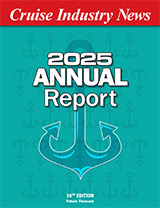The Massachusetts Port Authority (Massport) today voted to approve a second ship radar to monitor the boating channel under the final approach to Logan’s Runway 27. The airport currently has a ship detection system for the Runway 4R approach. In addition to the existing radar coverage, the Federal Aviation Administration has asked that Massport provide the same positive surveillance technology to protect the final approach to Logan’s Runway 27. In 2013, Runway 27 was Logan’s busiest arrival runway with 32 percent of all jet arrivals.
Boston Logan is the only airport in the nation with ship detection radar, which detects the height and distance of ships passing through Boston Harbor and provides Air Traffic Controllers with more information as planes land and depart. This system can become critical in poor visibility, such as thick fog.
In 2007, Massport installed the system off Runway 4R. This system covers the Boston Main Channel for large ships entering and exiting the Inner Harbor. The new system will cover the area between Runway 27 and Winthrop Harbor, which is frequented by pleasure craft.
“Massport places safety and security of the people who use our facilities and work here, above all other priorities,” said Thomas P. Glynn, Massport’s CEO. “With new technology come new solutions. These ship detection systems provide our staff and our partners at the FAA with additional information as planes approach and depart from Logan, adding another layer of safety to an already very safe system.’’
The installation, operation, and maintenance of this new system to support and maintain the vertical guidance provided to aircraft landing on Runway 27 is estimated at $1,650,000.
Boston Logan, 15 minutes from the intersection of Route 128 and I-90 and five minutes from downtown Boston, serves as the gateway to the New England region and offers nonstop service to 74 domestic and 39 international destinations and in 2013 handled 30.2 million passengers. Boston Logan is served by two public transit lines and was the Air Line Pilot Association’s Airport of the Year for 2008 because of its commitment to safety. Over the past decade, the airport spent $4.5 billion on a modernization program that includes new terminals, public transportation access, parking facilities, roadways and airport concessions, and has been transformed into a world-class 21st Century facility. The airport generates $7 billion in total economic impact each year.



